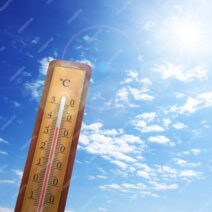Car crashes represent a significant societal issue, presenting not only immediate consequences but also raising important questions regarding the conservation of energy. The principle of kinetic energy plays a pivotal role in understanding the dynamics of vehicular collisions. This article delves into the intricacies of kinetic energy in the context of car crashes, exploring various aspects including the basic concepts of energy conservation, real-world implications of crashes, and measures to mitigate the adverse effects of such incidents.
Kinetic energy is defined as the energy of an object in motion. Mathematically, it is expressed through the equation KE = 1/2 mv², where ‘m’ signifies the mass of the object and ‘v’ denotes its velocity. In simpler terms, the faster an object moves, the more kinetic energy it possesses. However, when vehicles collide, the situation becomes complex. The energy does not simply vanish; instead, it transforms into other forms, often resulting in damaging consequences.
In a scenario of a minor fender bender, the transformation of kinetic energy may involve minor deformations in the vehicles and some sound energy emitted during the impact. However, in more severe collisions, especially at high speeds, the disintegration of metal structures, the snapping of glass, and the shattering of components exemplify the conversion of kinetic energy into thermal, acoustic, and potentially electromagnetic energy. This energy transformation raises an essential question: Where does the conserved energy go when a car crash occurs?
In ideal circumstances, kinetic energy is conserved and transferred completely from one object to another. However, in collisions, there is an inevitable loss of energy to the environment, primarily due to inelastic deformations and heat generation. Inelastic collisions, common in car crashes, imply that the two colliding bodies do not bounce apart post-impact. Instead, they become entangled, leading to a substantial portion of kinetic energy dissipating as heat and sound. This phenomenon illustrates that in real-world applications, energy conservation can be paradoxically addressed, indicating that not all kinetic energy is recoverable. Additionally, the inherent inefficiencies of vehicle structures contribute to this energy loss.
The implications of these energy transformations extend beyond the immediate aftermath of a crash. For instance, serious injuries often result from the forces exerted on the human body during collisions. The body can only withstand a finite amount of force before suffering trauma. In severe car accidents, the rapid deceleration of the vehicle abruptly halts its motion, converting kinetic energy into internal energy, which manifests as physical harm. This risk highlights the significance of understanding kinetic energy dynamics and its critical role in promoting automotive safety advancements.
Moreover, from an environmental perspective, increased vehicle accidents amplify energy consumption and wastefulness. The production of vehicles entails a significant expenditure of resources, and the energy harnessed for manufacturing, driving, and disposing of the remnants of crashed automobiles contributes to atmospheric pollution and consumption of natural resources.
Car manufacturers and safety regulations have increasingly focused on enhancing automotive designs to mitigate the adverse effects of kinetic energy during crashes. The advent of crumple zones—areas designed to deform and absorb energy in the event of a collision—exemplifies an advanced approach to safety engineering. By intentionally programming specific structural weaknesses, automotive engineers aim to channel kinetic energy away from the occupants, reducing the likelihood of injury. Alongside crumple zones, the introduction of advanced safety features, including airbags and seatbelt technology, works in concert to provide further protection by utilizing and dissipating kinetic energy during a crash.
However, innovative technological advancements alone do not suffice in preventing car accidents. The human element remains one of the most critical factors in vehicular safety. Distracted driving, speeding, and driving under the influence represent preventable behaviors that exacerbate the energy crisis of car crashes. Successfully addressing these driver-related issues is essential for promoting roadway safety and preventing the transformation of kinetic energy into destructive forms that can lead to catastrophic outcomes.
The role of legislation and educational campaigns cannot be overstated. Governments are often responsible for instituting regulations that promote safe driving practices, limit speed, and establish stringent penalties for violations. Furthermore, public awareness campaigns seeking to educate the populace about the dangers associated with reckless driving can positively influence behavior. Engaging communities in dialogues about the risks related to kinetic energy during collisions can foster changes in public perception and behavior, ultimately enhancing road safety.
In summary, the relationship between car crashes and kinetic energy encapsulates various domains: physics, engineering, human behavior, and environmental implications. The inherent complexities of energy transformation during collisions underscore the importance of a multifaceted approach to improving road safety. While the total energy in the universe remains conserved, a significant portion of kinetic energy during car accidents dissipates in detrimental ways, resulting in structural damage, human injury, and environmental degradation. The combination of technological innovation, legislative measures, and public education represents a holistic strategy for mitigating the risks associated with car crashes, ultimately striving for a more conscientious and sustainable approach to transportation.






